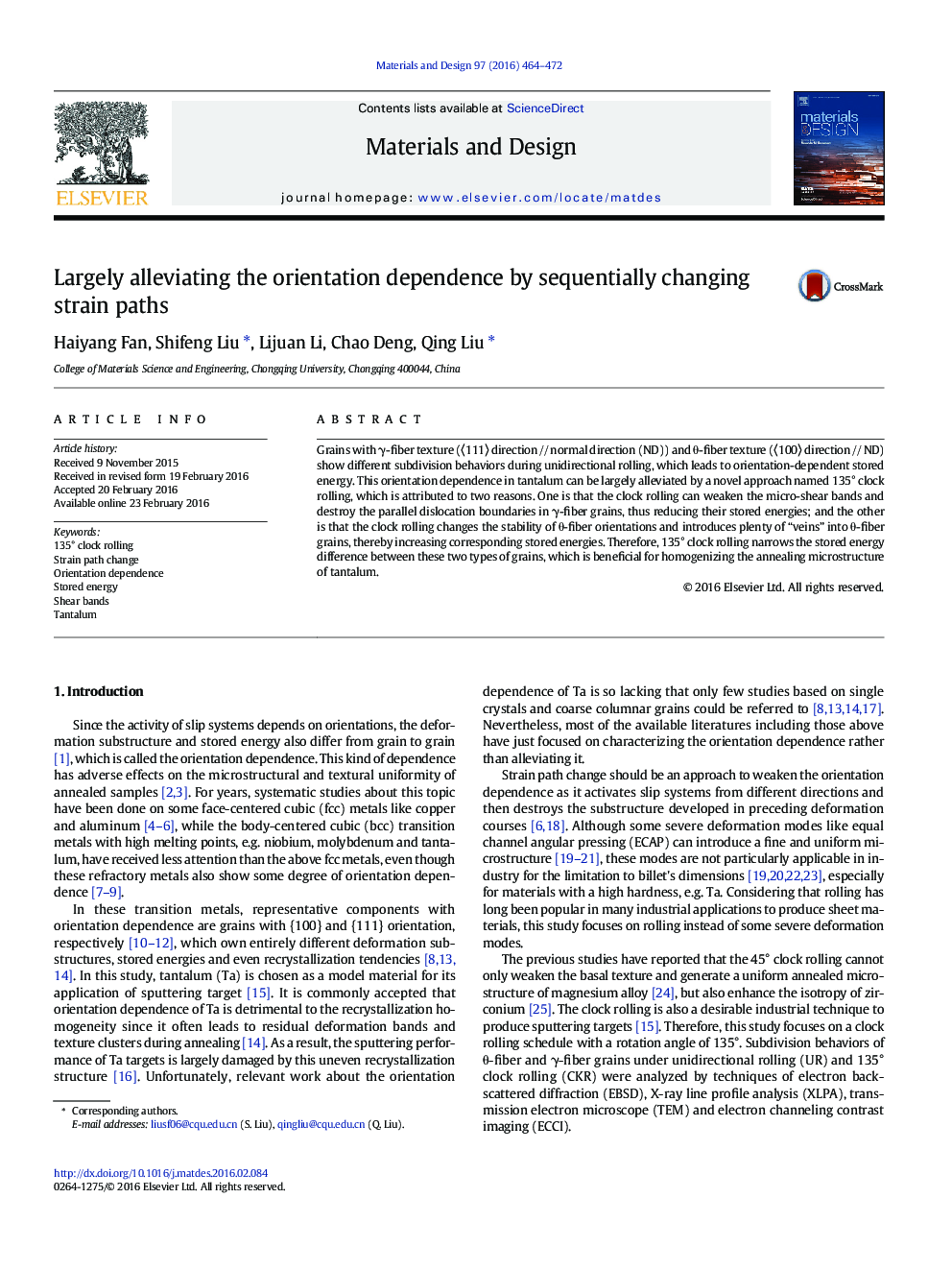| Article ID | Journal | Published Year | Pages | File Type |
|---|---|---|---|---|
| 828101 | Materials & Design | 2016 | 9 Pages |
•A novel rolling schedule, 135° clock rolling, was presented in this paper.•The orientation dependence in tantalum was alleviated by changing rolling paths sequentially with a rotation angle of 135°.•The substructural evolutions of θ-fiber and γ-fiber grains under unidirectional and 135° clock rolling were analyzed.•The orientation-dependent stored energy was analyzed in a quantitative way.
Grains with γ-fiber texture (〈111〉 direction // normal direction (ND)) and θ-fiber texture (〈100〉 direction // ND) show different subdivision behaviors during unidirectional rolling, which leads to orientation-dependent stored energy. This orientation dependence in tantalum can be largely alleviated by a novel approach named 135° clock rolling, which is attributed to two reasons. One is that the clock rolling can weaken the micro-shear bands and destroy the parallel dislocation boundaries in γ-fiber grains, thus reducing their stored energies; and the other is that the clock rolling changes the stability of θ-fiber orientations and introduces plenty of “veins” into θ-fiber grains, thereby increasing corresponding stored energies. Therefore, 135° clock rolling narrows the stored energy difference between these two types of grains, which is beneficial for homogenizing the annealing microstructure of tantalum.
Graphical abstractFigure optionsDownload full-size imageDownload as PowerPoint slide
